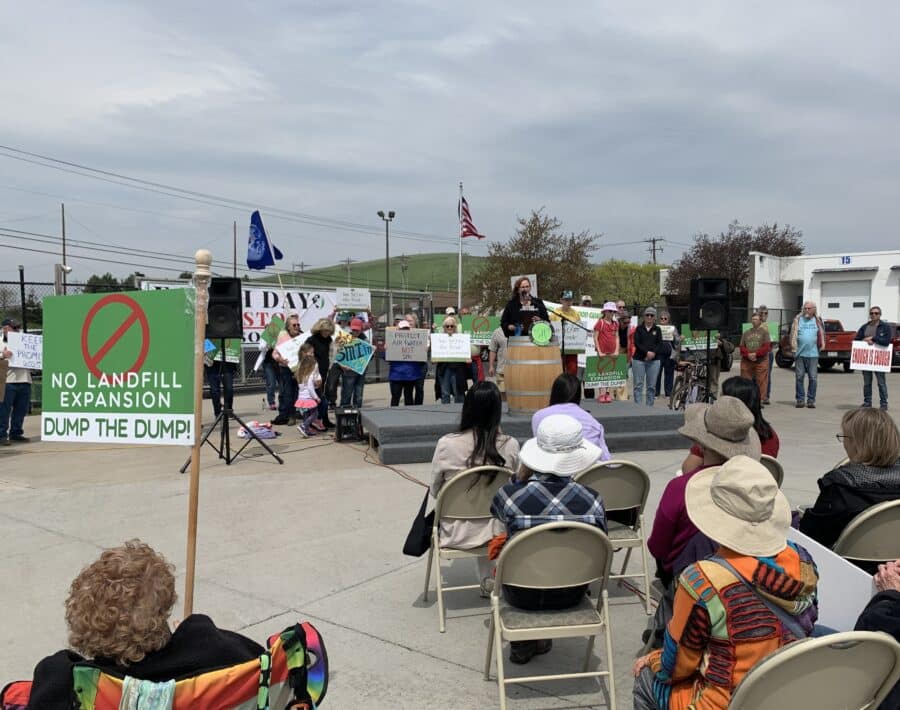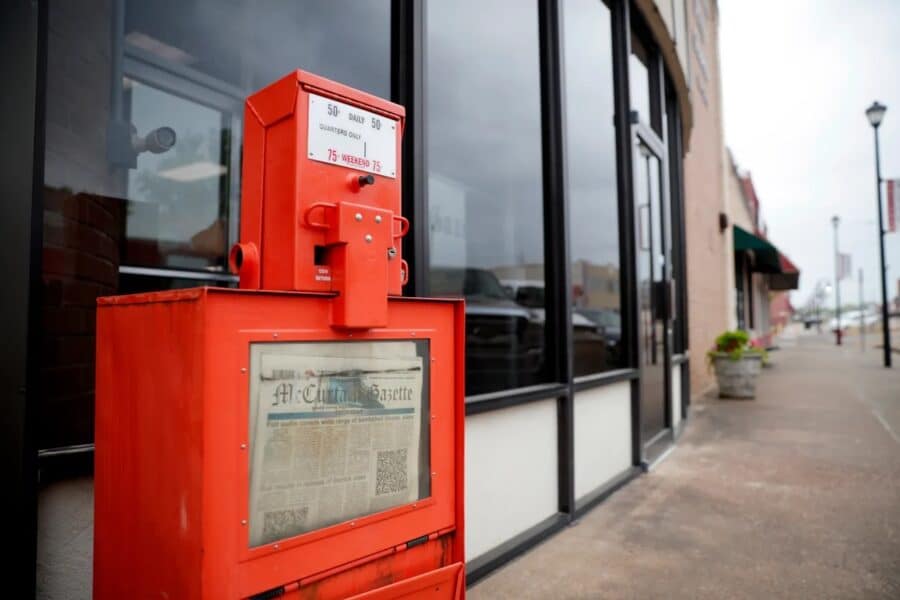In 2006, I thought I would never forgive my father for taking me out of school without letting my teacher—or me—know that I’d be leaving town for good, with my treasured purple pencil box still inside my second grade desk. On our car ride to Worthington, Minnesota that February, all I noticed was whiteness from the snow-covered fields and the feeling of unbearable sadness.
Immigrants Find a Home in This Rural Minnesota Town
What Worthington’s history of welcoming immigrants can teach us about overcoming a polarized culture


As a young child, I didn’t question our moves. They were a normal part of our life, with my father regularly picking up jobs in another community—part of the struggle still faced by many laborers today. This time he was going to work at the PM Beef plant in Windom, Minnesota, and we were going to station ourselves about 30 miles away near my mother’s sister’s family, who had moved to Worthington in the early 1990s.
I don’t recall much about my life at that age, other than my parents towing me around as we found a new Mexican grocery store, a new house and a new school. I attended Prairie Elementary in Worthington, and I remember it being the biggest school building ever. The floors were slick and shiny—they made my shoes squeak with every step.
At the time we arrived there, the population of Worthington was under 11,000, with a somewhat diverse makeup. I quickly made friends with other classmates who were white and of color. The diversity in the community is associated with the meat-packing plant JBS (formerly Swift and Company), Worthington’s largest employer, which sits on the east side of town. Many of my friend’s parents (mostly Latino) worked at the local plant. Other immigrant parents worked in various agricultural businesses around the area, such as PM Windom Beef, which has been bought out by other companies in the last few years as large multinational corporations have consolidated the industry.

As a young girl, I recognized the welcoming and caring attitude of my classmates and teachers, not the lack of cultural appreciation in the classroom nor the conservative politics of neighbors. In third grade, I joined the Celebration Chorus where I enjoyed time after school singing with other students. We traveled to local businesses and sang to their employees during the holidays. I also joined a local Girl Scouts chapter, where I created crafts, visited local organizations and, most importantly, hung out with friends. The opportunities for things to do in the district in grade school were endless.
Later that same year, my parents managed to save enough money to buy a house in Worthington. We were the first non-white family on our block. A few streets down, you could find a house or two occupied by Asian or Latino families, but the neighborhood was predominantly white and elderly. With our new neighbors standing in their yards or sitting on their lawn chairs, we felt like we were being watched. I recall when our next-door neighbor came to introduce himself on the day we moved in. He wore a cotton shirt and blue jeans and bore wispy gray hair, his nose was round and plumb, just like his belly.
“Hello,” he said. “My name is Bob. Welcome.”
My mother and father immediately placed our moving boxes on the ground and extended their hands to greet him. My parents, as Mexican as can be, whisper-yelled through their smiles, telling my brother and me to come say hello, which we did. That short greeting would be our introduction to an array of welcoming activities during our first few years on Galena Street. These included neighborhood picnics where my mother would bring the famous Mexican dish of frijoles charros.
In that first week, Bob and a few other neighbors held a get-together to “welcome” us to the neighborhood. My parents believed it was as much about their curiosity—“Who are these brown people and what do they do?”—as it was about being neighborly. As young as I was, I have a vivid memory of that moment. At Bob’s house, we walked into a nice, well-kept living space with wooden furniture and the cleanest white carpet imaginable. Bob’s wife served the adults tea in China teacups—the nicest I’d ever seen. They expressed interest in learning about my brother and me and what we did for fun. Much of the conversation was part introduction, part interrogation. I didn’t have to do much translation, as my parents’ broken English was good enough for the conversational tone. It was a Hallmark moment, to say the least, but one we would experience only a few times before most of our early neighbors moved to retirement homes or passed away.
A little over a decade later, Galena Street and the rest of the blocks in the area are heavily multi-generational, with houses owned by people of color and immigrants. Our closest neighbors are all Central Americans, from El Salvador and Guatemala. As in any community where things change rapidly, there are concerns and issues that heighten a sense of distrust and result in racism, bigotry, ignorance, xenophobia and stubbornness. Much of this is fueled by the anti-immigrant rhetoric promoted by right wing politicians and media—Donald Trump, for instance, saying that undocumented immigrants are “poisoning the blood of our country”—but it’s important to remember these issues also a result from a lack of neighborly gestures and community building. For example, people would rather call the cops on their neighbor for parking on the wrong side of the street rather than walking over to their house and respectfully letting them know about their incorrect parking, which they may have been completely clueless about.
It’s human nature to be territorial and judgmental. I know my family and other families were and may still be to this day. My mother, for example, obsesses over maintaining a clean and quiet neighborhood. Where once the only noise disruption was a lawnmower roaring on a warm day, nowadays you can hear Latin music blasting or the barking of the neighbor’s dogs, or the overflowing trash bin that begins to disrupt cleanliness. There’s also the groans over the amount of cars parked on a street that makes parking no longer easily accessible—things you would expect in an urban area but not so much in a small town.

The latest census reported more than 13,300 residents in Worthington. In my 2015 high school graduating class of around 180, students of color accounted for a small but visible percentage of the student body. Since then, the school district overall has grown substantially, resulting in nearly 70% students of color. The increase in the student population prompted the community to demand a school referendum—not once or twice but six times! It finally passed in 2019, but only after an ongoing battle of nearly seven years. This referendum has led to an expansion of space for students in overcrowded schools such as Prairie Elementary. This change took years of advocacy and fighting against a dismissive xenophobic sentiment of “Those schools are filled with immigrant kids.”
Another noteworthy change in Worthington is the multitude of restaurants and businesses that are immigrant owned. A variety of shops are operated by Guatemalans, Mexicans and Asians. Newcomers now have options of where to buy their traditional household food items. There is also an opportunity to expand one’s palate, with La Michoacana offering a tasty alternative to Dairy Queen. During the height of the Covid-19 pandemic, food trucks began making an appearance. Longtime residents who aren’t familiar with these establishments may take a bit of convincing to patronize them, and they may well not appreciate the irony that their situation is similar to that of an immigrant or person of color feeling uneasy about entering a certain restaurant whose customers are predominantly white. A welcoming aspect is crucial for neighbors to successfully interact with one another.
The progression of multilingual individuals and their families moving into Worthington has made an impact on the city’s resources, accomplishments and identity. In 2020, prompted by the pandemic, local residents came together to develop a plan to narrow the community gap between the city and its multicultural residents. The Cross Cultural Advisory Committee (CCAC) was created by a group of individuals seeking better communication between city officials and the larger community. Advocacy within the CCAC led to the first Community Relations and Communications position for the city. Other small groups and organizations have also formed to create and expand access to resources. Sports teams from Worthington High School are helping to shape Worthington’s identity, in particular the boys soccer team, which is composed of a majority of players from immigrant households.
In less than two decades, Worthington has become home to hundreds of first- and second-generation immigrants—Latino, Asian and African—who are building homes for their families and creating a wave of people of color no longer strongly tied to their immigration background. Worthington can feel like a culture shock for visitors from an urban community who could never fathom a small town growing in ways that mirror a diverse urban area, or from rural communities that are predominantly white. In that way, Worthington may be unique. A community is only as strong as a teacher who exemplifies what going above and beyond looks, like creating a box for communal pencils, empathizing with someone’s story or creating a space for trust. Since moving to Worthington as a nine-year-old, I have had enormous gratitude for my supportive teachers, my kind neighbors and my loving parents—they’re most likely the reason I became a teacher in the place I grew up. While Worthington grows and learns in this polarizing political climate, it is fascinating to see what the people of our community will make Worthington to be for one another.

Andrea Valeria Duarte-Alonso is a first-generation Mexican-American from the great plains of the Midwest. Born in Dodge City, Kansas, to immigrant parents working in the meat-processing industry, she had the opportunity to live in multiple small towns that are largely populated with immigrant families. She’s a poet, freelance writer and educator based in Worthington, Minnesota.
Have thoughts or reactions to this or any other piece that you’d like to share? Send us a note with the Letter to the Editor form.
Want to republish this story? Check out our guide.
More from Barn Raiser

Finger Lakes Residents Fight to Enforce Constitutional Right to a Clean Environment







